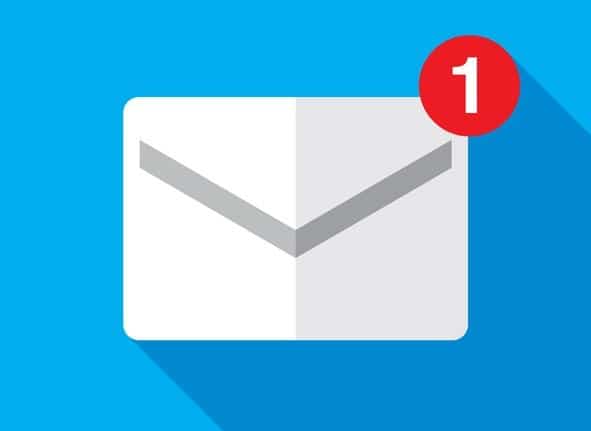We all use email every day, from work to communicating with friends and family. But do we all follow email etiquette to ensure that we communicate effectively and efficiently? Email etiquette is more than just common sense. It is about understanding the rules of etiquette and the importance of following them.
In this article, we’ll explore the various aspects of email etiquette, from understanding the basics to understanding the importance of following the rules. We’ll also discuss the 10 essential email etiquette rules, the do’s and don’ts of emails, and the five elements of etiquette. Let’s get started!
Email Etiquette for Business
Email etiquette is especially important in the business world. It is important to understand the importance of following the rules to ensure that you are communicating effectively and efficiently with your colleagues, clients, and customers.
First and foremost, it is important to remember to be professional in all emails. This means using appropriate language, avoiding slang, and using proper grammar and punctuation. It is also important to keep emails concise and to the point. Emails should also be clear and easy to understand.
When communicating with colleagues, clients, and customers, it is important to use a professional email address. This should include your name and, if applicable, the name of the company. It is also important to include a signature with your name, title, and contact information.
Proper Email Etiquette
Proper email etiquette is essential for effective communication. It is important to be respectful, polite, and considerate in all emails. This means using the recipient’s name and title, responding promptly, and avoiding sarcasm.
It is also important to use an appropriate subject line. This should be clear and descriptive and should indicate the purpose of the email. It is also important to include a clear and concise message body.
When it comes to attachments, it is important to ensure that they are properly labeled and that they are virus-free. It is also important to include a disclaimer if the email contains confidential information.
Rules for Email Etiquette
There are certain rules that should be followed when it comes to email etiquette. These include:
- Use a professional email address.
- Avoid using slang, emojis, and excessive exclamation points.
- Use a clear and descriptive subject line.
- Include a signature with your name, title, and contact information.
- Be polite, respectful, and considerate.
- Avoid sarcasm.
- Respond promptly.
- Keep emails concise and to the point.
- Use proper grammar and punctuation.
- Include a disclaimer if the email contains confidential information.
Email Etiquette Importance
Following email etiquette will help you establish professionalism, forge stronger connections at work, and give a positive impression of your employer. Also, it will improve communication and keep you and the company out of trouble. Understanding professional email etiquette will help you communicate with others respectfully and advance in your career. Email etiquette is important for effective communication. It is important to follow the rules of etiquette to ensure that you are communicating in a professional and respectful manner.
Good email etiquette is essential for business. It helps to build relationships with colleagues, clients, and customers. It is also important for maintaining a good reputation in the business world.
Email etiquette is also important for personal communication. Following the rules of etiquette helps to ensure that your message is clear, concise, and respectful.
What are 10 Do’s and Don’ts for using Email?
When attempting to work more quickly and effectively, we must not overlook the social norms that come with any method of communication. Here are the 10 email etiquette dos and don’ts.
#1. Use a clear subject line.
The likelihood that your message will be read increases with the clarity of your subject line because the majority of us must contend with the hundreds of emails that clutter our inboxes every day. To be explicit, if you’re sending someone a proposal, write, “The Fitch Proposal Is Attached.”
#2. Don’t forget to sign.
Every email should have a signature that identifies the sender and provides contact information. Set it up to display at the conclusion of every email automatically. So that the recipient doesn’t have to hunt up your address, email address, or phone number, including all of your contact information.
#3. Address in a formal manner.
No matter how well you know the person, using “Hey,” “Yo,” or “Hiya” is unprofessional. Instead, say “Hey” or “Hello”. The phrase “Dear (insert name)” is more formal. It’s quite acceptable to use the recipient’s name in the salutation, as in “Hi Robert,” but keep in mind that you shouldn’t shorten someone’s name unless you have their permission.
#4. Don’t use humor.
Humor is difficult to convey over email. Without the matching verbal tone and facial expressions, what you believe is humorous may be misconstrued by the other person or viewed as sarcasm. When in doubt, avoid using humor in professional discussions.
#5. Proofread your message for errors.
Don’t be shocked if someone evaluates you based on how you write emails. For instance, if your email is full of typos and grammatical mistakes, people might think you’re careless, sloppy, or even illiterate. Before clicking “send,” review your spelling, grammar, and message.
#6. Don’t assume the recipient understands what you’re saying.
Even if your letter is a reaction to a series of emails, write it as a standalone note. No “one-liners,” then. Incorporate the subject as well as any allusions to earlier emails, studies, or interactions. Looking back at the chain to review the context can be tedious and time-consuming. Your recipient might receive hundreds of emails every day and is unlikely to recall the sequence of events that led up to your email.
#7. Respond to every email.
Respond promptly and courteously to each genuine email that is addressed to you. Even if you don’t have an answer right away, spend a moment writing a reply to the email to let the sender know you got it. If the email was sent to the incorrect person, let the sender know.
#8. Don’t shoot from the lip.
Never respond in a snappy manner or write an angry email. Before sending your message, give it some serious thought. Put your message in the “drafts” folder if you want to save it for later consideration when you’re calmer and have time to think of a suitable response.
#9. Do not divulge any private information.
Even accidentally sharing emails is far too simple. In-person or over the phone is the best way to communicate any highly private or secret information. Before including private information in an email or an attachment, get permission.
#10. Don’t use exclamation points unnecessarily.
In professional communications, exclamation points, and other signs of elation like emoticons, acronyms like LOL, and full CAPS do not transfer effectively. If you don’t know the person incredibly well, leave them off. Also, using a string of exclamation points is unprofessional.
Maintaining professionalism and focus in your emails may take some work, but in the long run, you will come across as more polished and well-organized.
What are the Five Elements of Etiquette?
The five elements of etiquette are respect, politeness, consideration, clarity, and courtesy. Respect means treating others with respect, and politeness means being polite in all interactions. Consideration means taking into account the feelings and needs of others. Clarity means being clear and concise in all communication. “Courtesy” means being courteous and showing appreciation for others. Below are the major business etiquette rules you should implement:
#1. Politeness
Thank you, please, and welcome are some of the most crucial expressions to keep in mind. Constantly express gratitude to others for any opportunity they may present to your company. If both parties are familiar to you, never neglect to introduce them when they are meeting for the first time. Provide a brief description of each team member’s position when introducing them to a client. You have the chance to trade business cards when you first meet a client or business acquaintance. Before putting the card in your wallet, make it a point to read it.
#2. Courtesy
It’s always a good idea to show your appreciation, but keep in mind that some people can view pricey gifts as bribes. Little presents or thank-you notes are thought to be considerably more appropriate. Even if you don’t have any imminent plans to work with someone, you should always respond to calls and emails. For the individual standing next to you, hold the door open. Avoid smoking in public, especially if some of your group doesn’t smoke.
#3. Manners
In commercial relationships, good manners are a crucial cornerstone. Wait until everyone is seated and served before you begin eating if you are meeting clients or coworkers for breakfast, lunch, or dinner. Avoid overflowing your plate entirely the first time at a buffet. At the same time, refrain from picking at your food and make an effort to appear as though you are enjoying both the meal and the company. Try to engage everyone in the conversation and refrain from discussing anything personal unless the other person initiates it. Be courteous to the restaurant servers as well as your juniors.
#4. Punctuality
When you have a business meeting, aim to arrive on time. Avoid arriving too early since the other person might not be expecting you. Never be late since it can give the wrong impression and make you seem inefficient and unreliable. Make sure you are ready for the meeting by doing your homework beforehand and acting confidently.
#5. Professionalism
When you converse with colleagues and customers, refrain from debating on politics, religion, or other sensitive subjects. Unless the topic of conversation specifically includes your family, avoid discussing it. Never try to get close to someone by criticizing them or spreading rumors.
#6. Positive Body Language
When sitting or standing, keep your posture upright. Make sure your handshake is neither too hard nor too mild. Avoid strolling or walking too quickly in a group. Always keep a reasonable gap between yourself and other people. When speaking to someone, avoid moving too close or keeping too far away. For meetings and dinners, wear appropriate business clothing. Wear casual attire to unofficial meetings, but refrain from conspicuous or impolite attire.
Read Also: Service Email: Meaning, Examples and Top Providers
What is an Example of Email Etiquette?
An example of email etiquette is to use a professional email address that includes your name and, if applicable, the name of the company. It is also important to include a signature with your name, title, and contact information. When it comes to the message body, it should be clear and concise, using proper grammar and punctuation.
What are the Three Principles of Etiquette?
The three principles of etiquette are respect, consideration, and honesty.
Respect
Respect entails recognizing another person’s value and taking deliberate steps to demonstrate your concern for them.
The following examples illustrate how to explain this etiquette rule:
- Giving someone your full attention
- Not interrupting someone when they are speaking or working
- Dressing appropriately for any given situation
- Speaking appropriately/not speaking down to someone
- Not participating in unkind jokes or taunting
- Shaking hands
Consideration
Consideration entails acting with thoughtfulness when engaging with others and demonstrating empathy for others.
The following examples illustrate how to explain this etiquette rule:
- Saying please and thank you
- Holding a door open for someone
- Chewing with your mouth closed
- Saying excuse me
- Offering to help when you can
- Staying home when you are sick
- Being on time
Honesty
In addition to speaking the truth and abstaining from even small white lies, being honest means acting sincere and morally upright. We should also say that we prefer kind honesty to ruthless honesty. The foundation of tact is finding the truth that is constructive and acting on it without putting another person through pain or shame. Being sincere and genuine with others is another aspect of being honest. Nobody like fake or “lip-service” manners; they can be just as offensive as plain rudeness.
Bonus
Courtesy
Excellent manners are the state of being courteous. The definition of courtesy is being courteous or acting in a way that is appropriate for a given social setting. Being courteous entails thinking about how your actions will affect others and acting in a way that helps them. Respect, consideration, and civility are all aspects of courtesies.
Conclusion
Email etiquette is essential for effective communication. It is important to understand the importance of following the rules to ensure that you are communicating in a professional and respectful manner. By following the 10 essential rules of email etiquette, you can ensure that your emails are clear, concise, and respectful.
Email etiquette is important for business, as it helps to build relationships with colleagues, clients, and customers. It is also important for personal communication, as it helps to ensure that your message is clear, concise, and respectful. The five elements of etiquette – respect, politeness, consideration, clarity, and courtesy – should be followed at all times.
Following the rules of email etiquette is essential for effective communication. It is important to remember to be professional and respectful in all emails. By following these rules, you can ensure that your emails are clear, concise, and effective.
- LEADERSHIP VALUES: Importance of Values In leadership
- 2 WEEK NOTICE LETTER: How to Write Resignation Letters (+Free Samples)
- RESPECT IN THE WORKPLACE: Best Ways to Demonstrate It & The Importance
- PHONE ETIQUETTE: Best Tips and Standard to Follow
- LEADERSHIP ATTRIBUTES: The Top Key Strong Attributes that Make a Good Leader






